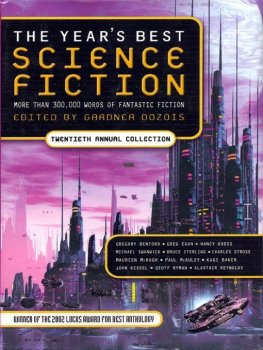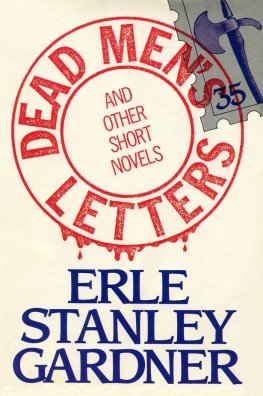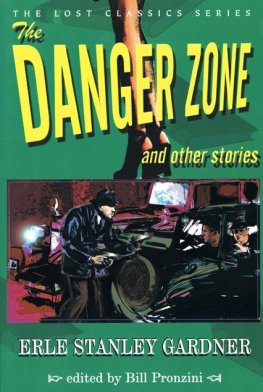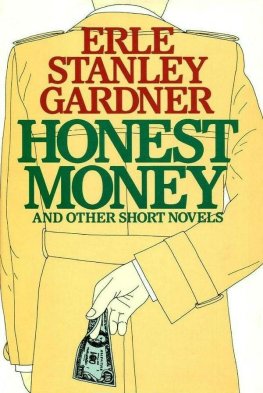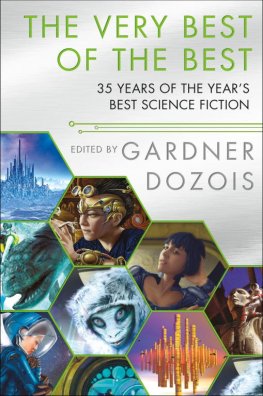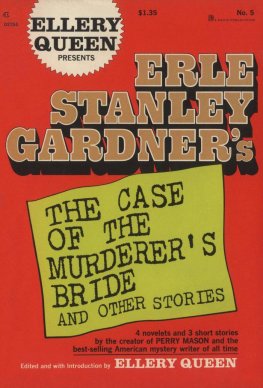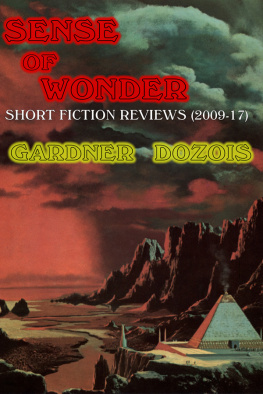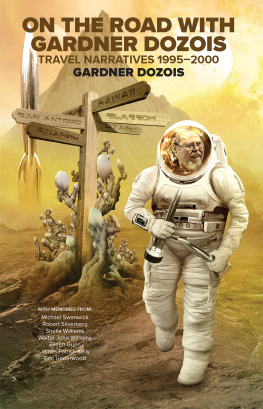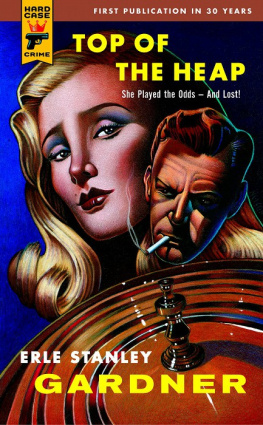The Human Zero
The Science Fiction Stories of Erle Stanley Gardner
The stories in this collection were first published in Argosy magazine on the following dates:
Rain Magic, October 20, 1928
Monkey Eyes Serialized, July 27-August 3, 1929
The Skys the Limit Serialized, December 7-December 14, 1929
A Year in a Day, July 19, 1930
The Man with Pin-Point Eyes, January 10, 1931
The Human Zero, December 19, 1931
New Worlds, December 17, 1932
Erle Stanley Gardner, author, lawyer, humanitarian, adventurer, was born in 1889. He did not begin writing until he was thirty-one, but in the next fifty years until his death in 1970, he averaged approximately one book every four months, one article every two months, and one novelette or short story every month. This is a remarkable record by itself, but it seems nothing short of astonishing when one considers Mr. Gardners other activities: eleven years (1921 to 1931) of full-time law practice, twelve years (1943 to 1955) of attending to the Perry Mason radio show, nine years (1957 to 1966) of monitoring scripts for the Perry Mason TV series, fifteen years (1949 to 1964) of devoting most of his time to the functioning of the Court of Last Resort in an attempt to improve the criminal justice system in this country, and thirty-eight years (1933 to 1970) of almost constant travel.
As a person, Mr. Gardner was an interesting blend of New Englander and westerner. The first ten years of his life were spent in Massachusetts, and his parents roots extended back to the Mayflower on his mothers side and to a long line of Yankee sea captains on his fathers side. This heritage shaped his conservative personal habits (drinking little and gambling less), his competitive ambition to excel, and his tenacious persistence. In 1899 his father, Charles Gardner, moved to the West Coast to further his career as a civil engineer, and the young Erle took to many of the western ways. For example, from the frontier atmosphere came his love of the outdoors and his informality, his confidence in his ability to teach himself things, and his nomadic tendencies. For the rest of his days, he would consider himself a Californian. His lively personal style was in some conflict with his New England upbringing and was a source of annoyance, for instance, to his very proper mother.
Erle was a clever, puckish youth whose habit of outsmarting authority kept getting him thrown out of schools. Fortunately, however, his great curiosity and enormous energy led him into the study of law. He gained admission to the bar by the age of twenty-one and shortly thereafter began establishing a reputation in Oxnard, California, as a brilliant criminal lawyer. His strengths were an ability to outmaneuver his opponents prior to trial, a genius for utilizing obscure statutes in innovative ways, and an ability to draw the truth out of opposition witnesses through dramatic cross-examinations. These are traits which later, of course, appeared in his most famous creation, Perry Mason.
By 1917, however, he realized that being a successful attorney was not exactly what he wanted because he disliked being tied down in one place. So for the next four years he was president of a sales company, which provided a life-style that satisfied his needs for action and travel. But a recession led to business reverses and a decision to return to law.
Still he remained restless, and after investigating a few alternatives he decided to become a writer. Such a profession would permit him to travel while working, and at first he could bring in some extra money while still practicing law. He began to teach himself how to write by banging away at his typewriter each evening until two oclock in the morning. A major breakthrough occurred as a result of a devastating criticism of The Shrieking Skeleton which the editors of Black Mask magazine had inadvertently enclosed with the rejected manuscript. This provided Mr. Gardner with clues about what he was doing wrong. He tore the story apart, and after three days of furious revision he produced a version good enough to be accepted. Other markets opened to him, and, by carefully analyzing the suggestions of editors, he learned to break down plots into component parts which he put on separate cardboard wheels. Some, for example, represented situations, characters, the lowest common denominators of public interest, and unexpected complications. By spinning these wheels and noting points of contact among spokes, he was usually able to generate a plot within thirty minutes. And since he wrote very quickly, he was able to produce a ten-thousand-word novelette every three days. Not all sold, of course, but enough did so that his income from writing increased from $974 in 1921 to $6,627 in 1926 and to more than $20,000 in the early thirties.
During 1932 he began reducing his legal work, and probably William Morrows acceptance of his first two Perry Mason novels that year gave him the confidence to cease practicing law in 1933, except in a consulting capacity. For two years he had been promising his agent a novel, but other commitments had left no time. Then Mr. Gardner decided he could save time by using a dictating machine. He spent a half day thinking up a plot and dictated in three and a half days what was eventually to be called The Case of the Velvet Claws. Six weeks later he produced his second novel in the same fashion.
Now he could once again be free, and in the summer of 1933 he began the seminomadic existence he would follow for most of the rest of his life. When not traveling abroad, or staying at one of the several residences he eventually maintained, he could be found traveling around the desert with several secretaries, stopping wherever he pleased and dictating work that would be typed up on the spot.
As a writer, Erle Stanley Gardner is one of the most popular of all time. His books have been translated into 37 foreign languages. His paperback sales exceed every other author who has ever lived, and a current estimate of his total sales in all languages and editions would be well over 300 million copies. The Case of the Velvet Claws ultimately sold 4,000,000 copies, a stunning figure for any novel, not to speak of a first novel. Of the 151 mystery novels which appeared on the bestseller lists from 1895 to 1965, Mr. Gardner was responsible for ninety-one.
Like Shakespeare, Dumas, and Dickens, he was remarkably popular during his lifetime, but, of course, the truest test of literary merit is how well sales hold up over time. And in this regard, Mr. Gardner continues to do very well. In 1979, almost fifty years since the first, and nine years after the last, novel was written, he still averaged 2,400 sales a day, seven days a week, fifty-two weeks a year.
To those who know that he wrote rapidly and prolifically, that he thought of himself as a businessman/lawyer who wrote because of circumstances, and that he continually referred to himself as a fiction factory, such staying power in his readership may seem surprising. Study his career closely, however, and many reasons for his success become apparent. First, he had the ability to become an expert in any field of knowledge that interested him. Law and writing are just two examples from a large number which included astronomy, surveying, archery, salesmanship, forensic medicine, polygraph work, and criminal psychology. Second, he always had the drive and ambition to try to make himself the best in whatever field he went into.
As Freeman Lewis remarked about him in a letter to The New York Times:
Erle had a right to be proud of his skills as a writer. They were real and hard-earned. It often seemed to me that he operated as a professional in an area inhabited largely by amateurs. And it also often seemed to me that his books should have been reviewed by sports columnists rather than bookish people, for Erle had the kinds of learned and applied skills that sports fans understand and cherish but which book reviewers often are too pretentious to appreciate...

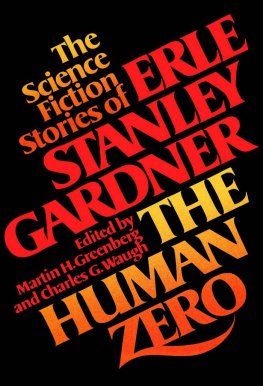
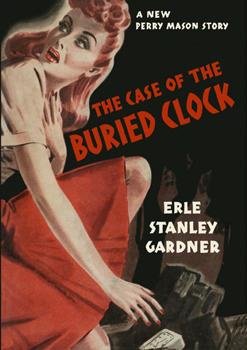
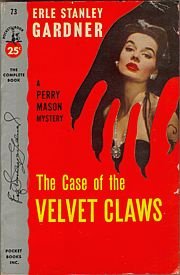
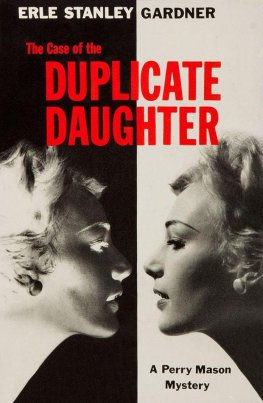

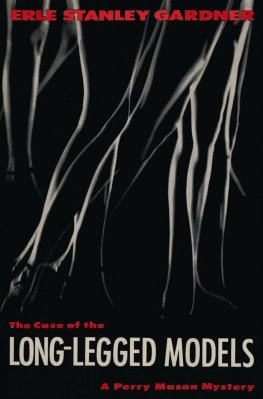
![Erl Gardner - The Case of the Deadly Toy [= The Case of the Greedy Grandpa]](/uploads/posts/book/924181/thumbs/erl-gardner-the-case-of-the-deadly-toy-the.jpg)
